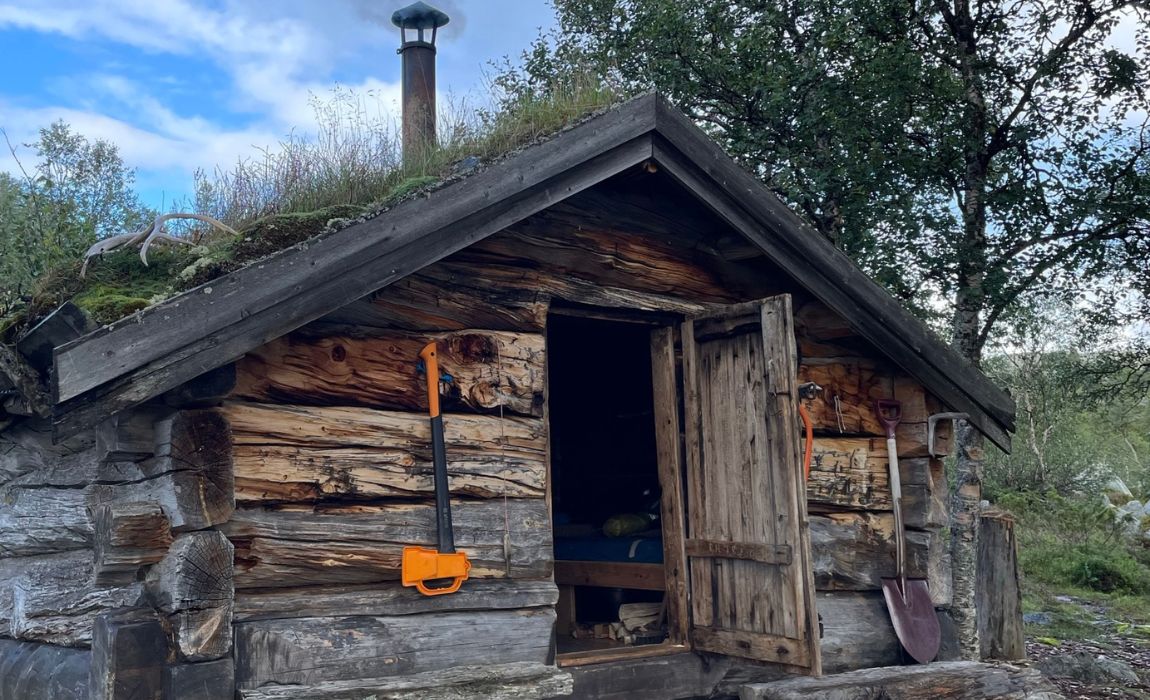
Discover Femundsmarka
Norway’s pristine wilderness and ultimate trekking destination
Femundsmarka, a name that may sound mystical to some and familiar to others, is a hidden gem in the middle of the vast Norwegian wilderness. This vast, untouched region is more than just a beautiful destination; it is a testament to nature’s untamed resilience. Whether you’re an intrepid explorer, a nature lover, or simply someone who craves a peaceful retreat, Femundsmarka promises a journey unlike any other. In this guide, we explore what makes this area so enchanting – from its rich biodiversity and fascinating history to the breathtaking trekking routes that await the adventurous. Welcome to Femundsmarka!
A brief overview of Femundsmarka
Geography and landscape
Covering more than 1,300 square kilometers, Femundsmarka is one of the largest contiguous, unspoiled wilderness areas in southern Scandinavia. It is characterized by a varied landscape of large lakes, dense forests, extensive bogs and rolling hills.
Flora and fauna
The region is characterized by a rich biodiversity. Due to its remote location and unspoiled nature, it is a habitat for many species that are rarely found in other parts of Norway. These include predators such as the wolverine and the lynx. In addition, the lakes and watercourses of Femundsmarka are teeming with fish such as trout and pike.
Recreational activities
Femundsmarka is a popular destination for hiking, fishing, canoeing and other outdoor activities. Due to its vastness and relative remoteness, the area is particularly suitable for those seeking solitude and a deep connection with nature.
Nature conservation
Femundsmarka was officially declared a national park in 1971 to preserve its unique natural landscape and biodiversity. The designation of the park ensures protection from any activities that could affect the ecological balance of the area.
Cultural importance
In the past, the area was used by the indigenous Sámi people as a reindeer herding area, and traces of their presence can still be found in some parts of the park.
How to get to Femundsmarka in Norway
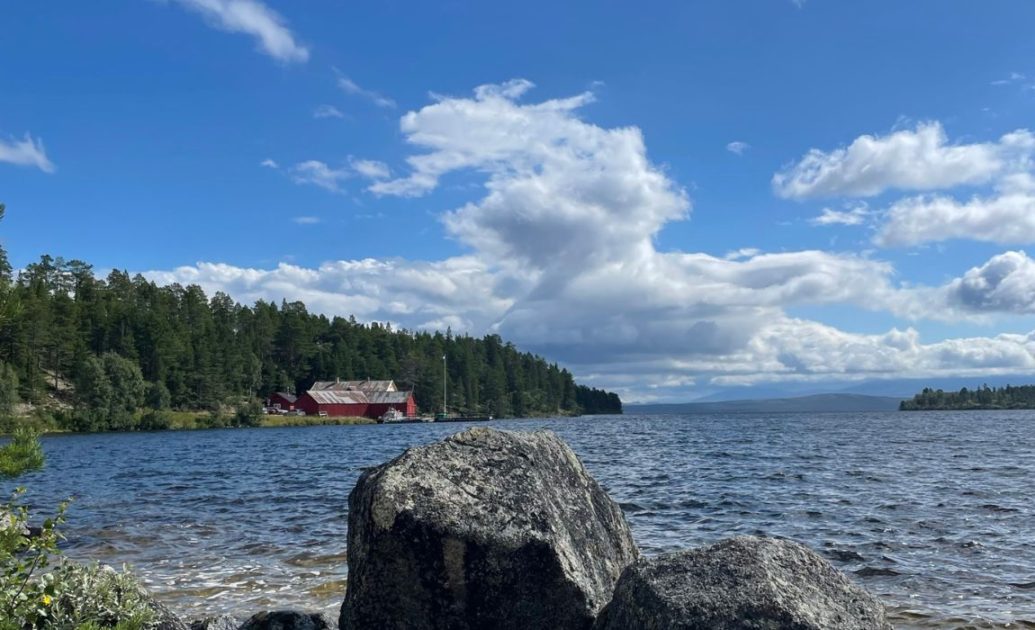
1. By Ferry
Departure Points: Germany has several ferry ports, with the most common ones for this route being Kiel, Rostock, and Puttgarden.
Destination: Most ferries headed towards Norway dock in Oslo.
Duration: Depending on your departure point and ferry speed, the journey takes between 12 to 13 hours starting in Flensburg.
Cost: The price varies based on the ferry company, time of year, and type of ticket (pedestrian, with a car, etc.). As of my last update, pedestrian prices start at around €50, while taking a car can start from €100 and up.
Advantages: The ferry ride offers a relaxed journey, with some ferries providing amenities like restaurants, entertainment, and cabins. It’s particularly appealing if you prefer to break up the land journey or if you’re traveling with a vehicle.
2. Via the Bridge
Route: This involves driving through Denmark and then crossing the Øresund Bridge into Sweden. From there, you can head north towards Norway.
Duration: From Flensburg (Germany) to Oslo, it’s roughly a 9-10 hour drive without extended breaks.
Cost: The toll for the Øresund Bridge can be around €60 for a standard car. Additionally, consider fuel costs, which are higher since the route is longer. Additionally you will also have to pay a toll if you´re driving through Göteburg.
Advantages: The first time going to Femundsmarka I decided for this option. Next time I would choose the ferry. The drive is quite exhausting especially if you don´t come from the northern part of Germany. With the extra fuel money and tolls, taking the ferry seems like the smarter option.
After arriving in Oslo: Regardless of how you get to Oslo, you’ll need to drive to Femundsmarka. The drive is roughly 4 hours from Oslo, traversing beautiful landscapes and offering opportunities for pit stops in charming Norwegian towns.
Possible Start and End Points for Femundsmarka
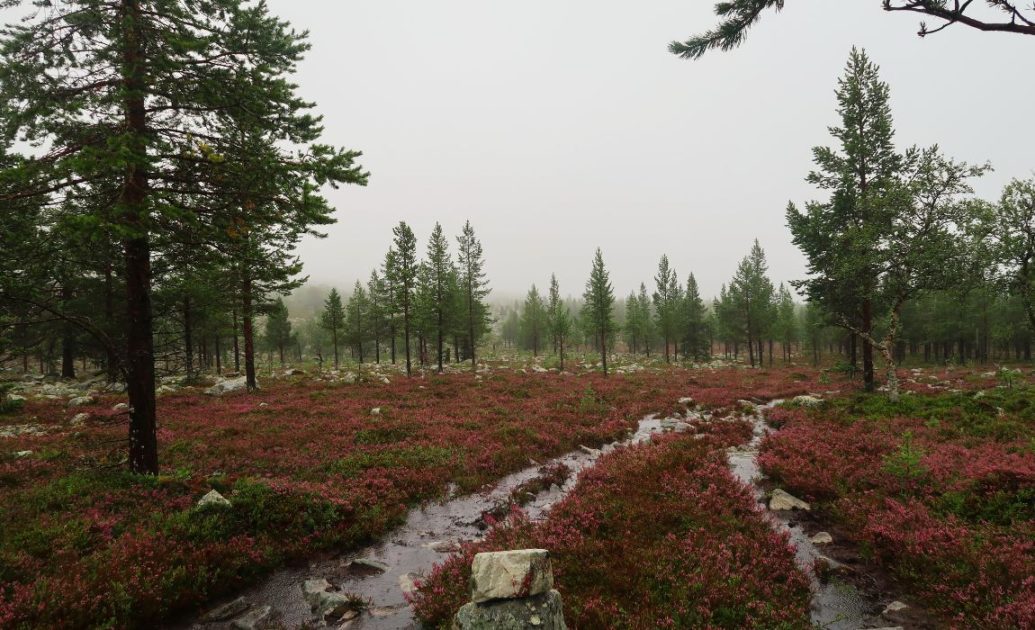
The Femundsmarka National Park, known for its vast lakes, dense forests, and varied terrains, offers several trailheads for trekkers keen on exploring its beauty. Whether you’re a novice hiker or a seasoned trekker, there are routes to suit all abilities. Here’s a look at some popular start and end points for your trek:
Elgå:
- Start Point: Elgå, located on the eastern edge of the park and by Lake Femunden, is an ideal starting point for those looking to explore the eastern regions of Femundsmarka.
- End Point Options: Røvollen or Møkkalasset are two typical end destinations when starting from Elgå.
Røros:
- Start Point: Though Røros is situated slightly outside the park’s borders, it’s a popular entryway, particularly for those coming from the south or west.
- End Point Options: After traversing the park, trekkers can conclude their journey in Elgå or Synnervika.
Grøtåa:
- Start Point: Grøtåa is on the northern fringe of the park and provides a route through some of the park’s rugged terrains.
- End Point Options: Consider finishing at Haugen or further down at Røvollen for a longer trek.
Synnervika:
- Start Point: Found on the western side of Lake Femunden, Synnervika offers scenic trails with panoramic lake views.
- End Point Options: Depending on the trek’s length and complexity you’re after, Langen or Elgå are suitable concluding spots.
When planning your trek, it’s crucial to consider the terrain difficulty, potential weather conditions, and your physical fitness. It’s always beneficial to consult with local guides or park authorities to get up-to-date trail information. Regardless of the route chosen, ensure you’re well-prepared with essential gear, food, and navigation tools to enjoy the mesmerizing beauty Femundsmarka has to offer.
Parking Options
If you’re planning to venture into the serene landscapes of Femundsmarka by car, it’s essential to know where you can safely leave your vehicle. Elgå and Synnervika are the main options I know of:
Elgå Long Term Parking: This is one of the primary parking areas for those starting their trek from the eastern side of the park. The parking lot is quite spacious. It’s close to the harbor and the information center. After the information center, make a right turn and you´ll see the fenced in parking lot. You can pay either in the information center by card or put cash in one of the designated envelopes.
Synnervika Parking Area: Found on the western side of Lake Femunden, this parking spot offers easy access to the trails starting from Synnervika. It’s a well-maintained area, suitable for overnight parking for trekkers.
Eating in Femundsmarka: Fueling Your Wilderness Adventure
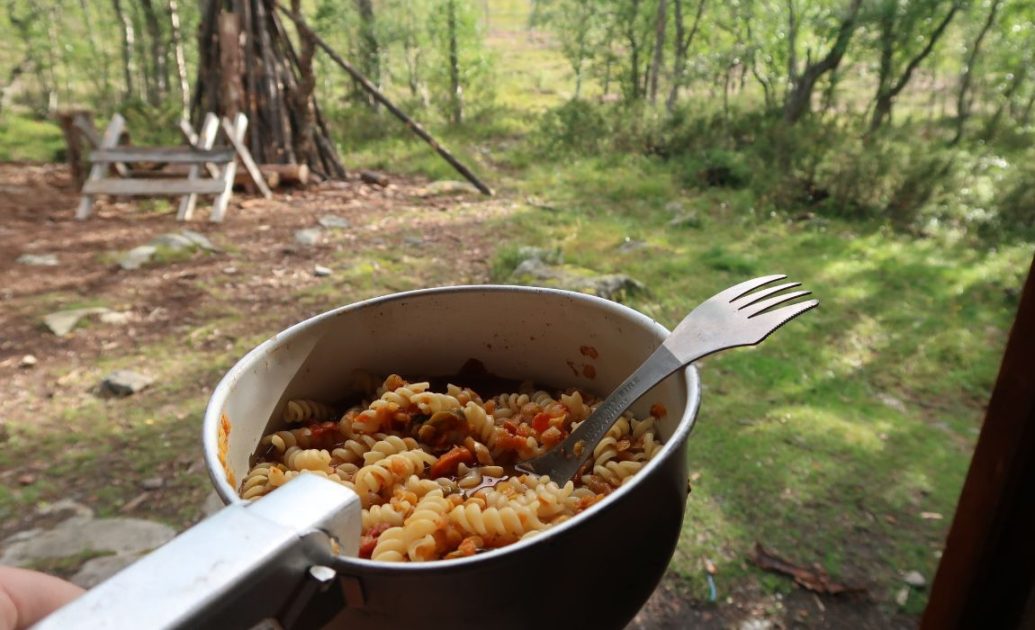
Femundsmarka, with its pristine landscapes and untouched wilderness, is not a place where you’ll find restaurants or cafes dotting the trail. However, this only adds to the authentic experience of truly being in nature. Here’s a guide to ensure you stay nourished during your trek.
Pack Your Own:
- Dehydrated Meals: Lightweight and compact, these meals only require hot water. They come in a variety of options, from pasta to curries.
- Energy Bars and Trail Mix: For a quick energy boost, always have a bar or some trail mix handy.
- Instant Oatmeal: A fulfilling breakfast option. Add dried fruits or nuts for extra flavor and energy.
- Canned Goods: Tuna, beans, or soups can be carried, but keep in mind they do add weight.
Fresh Catch:
- If you’re experienced and have the necessary permits, Femundsmarka’s lakes offer opportunities for fishing. Trout is a common catch here. Remember to carry a compact cooking set to grill or boil your catch.
Natural Foraging:
- Depending on the season, you might find berries like cloudberries, blueberries, or lingonberries. Ensure you’re familiar with the area’s edible plants or berries before foraging.
Water:
- Drink directly from the fresh streams or lakes, but always ensure the water source looks clean. For extra precaution, use water purification tablets or portable water filters.
Cooking:
- A compact camping stove can be a lifesaver, especially in colder months. Pack lightweight utensils and consider using a wind shield for faster cooking.
- Fire: In some designated areas, campfires are allowed. However, be aware of the local regulations, and always practice Leave No Trace principles.
Leave No Trace:
- Always clean up after yourself. Carry resealable bags to pack out your trash. Ensure you leave the beautiful wilderness of Femundsmarka as pristine as you found it.
Accommodation in Femundsmarka: Embracing the Wilderness
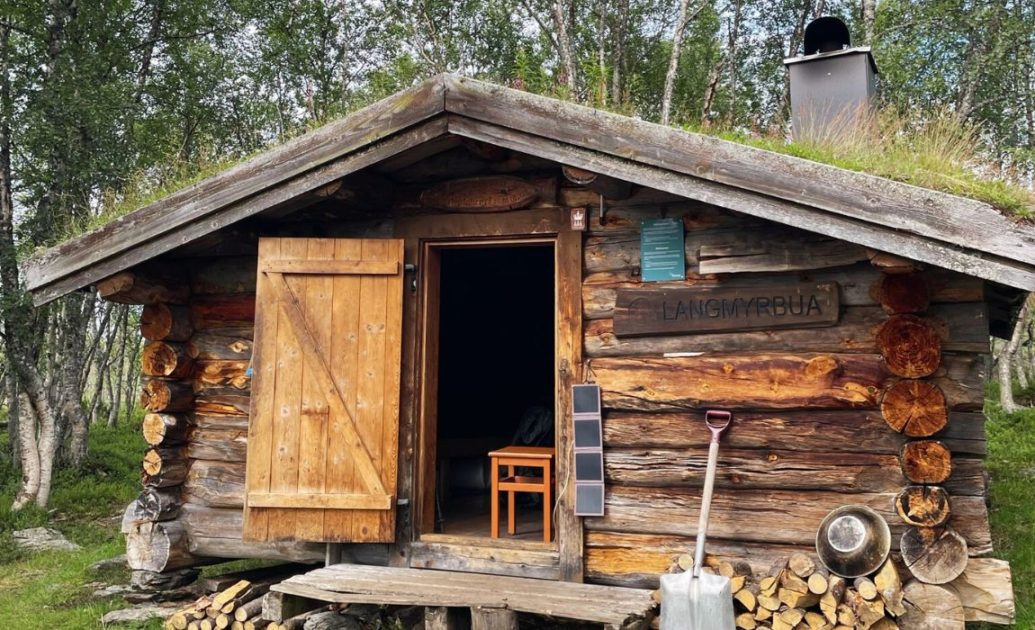
Femundsmarka offers an immersive nature experience, and part of that immersion comes from the accommodation options. Unlike bustling tourist spots, here you’re truly in the lap of nature. Let’s explore where you can rest after a day of trekking.
Wild Camping:
- Freedom to Roam: Norway’s ‘allemannsretten’ or ‘every man’s right’ law allows you to set up a tent anywhere in the wilderness, as long as it’s at least 150 meters away from the nearest inhabited house and not within the boundaries of a national park.
- Considerations: Ensure you leave no trace. Avoid setting up camp on delicate terrain and always pack out what you pack in.
Cabins and Huts:
- DNT (The Norwegian Trekking Association) Cabins: Scattered throughout the wilderness, these are a staple for trekkers in Norway. Some are staffed with provisions and offer meals, while others are self-service or no-service huts.
- Booking: During peak season, it’s advisable to book in advance for staffed cabins. However, self-service and no-service huts cannot be booked and are available on a first-come, first-served basis.
Shelters:
- Occasionally, you’ll stumble upon basic wooden shelters in Femundsmarka. These are open-fronted and offer a simple roof over your head – perfect for a night’s rest while listening to the sounds of the wilderness.
Local Lodges:
- On the fringes of Femundsmarka, local lodges offer a more comfortable stay, often with meals included. This is a great option for those who want to start or end their trek with a bit more comfort.
Considerations:
- Weather: Always check the weather forecast. If storms or heavy rain are predicted, seek sturdy shelter.
- Duration: If you’re on a longer trek, mix and match your accommodation. A night in a cabin can be a welcome break from wild camping.
Wildlife in Femundsmarka: Nature’s Exquisite Residents
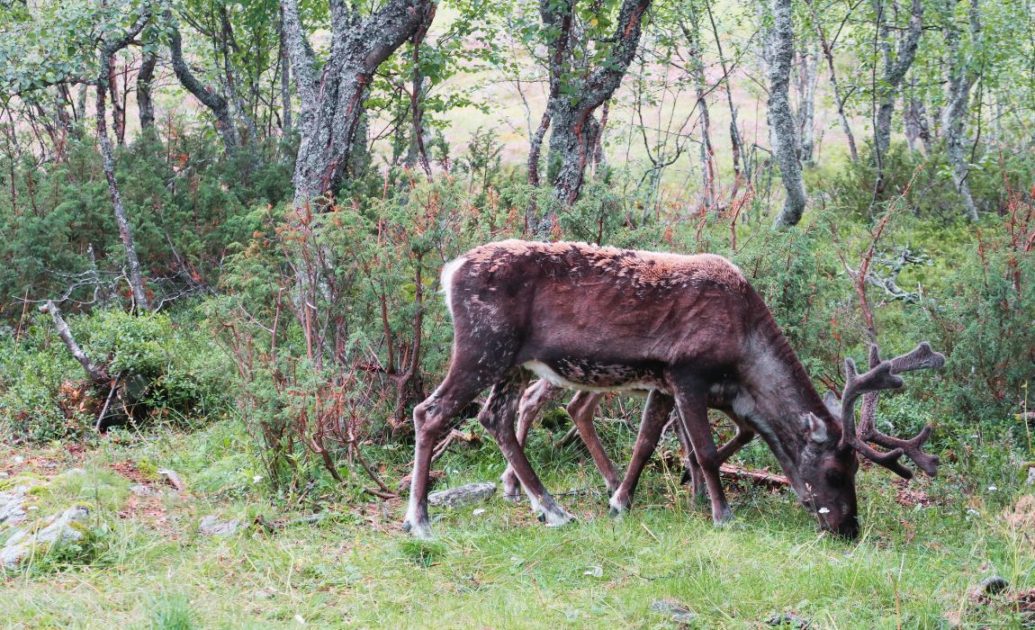
One of the prime lures of Femundsmarka isn’t just its breathtaking landscapes; it’s the diverse wildlife that calls this region home. Here’s a peek into some of the fascinating creatures you might encounter during your visit:
Mammals:
- Reindeer: A significant population of wild reindeer roams the high plateaus of Femundsmarka. These majestic animals are often seen in large groups, especially during their migration seasons.
- Moose: Often referred to as the ‘King of the Forest’, moose are quite common and can be seen near water sources, especially during dawn and dusk.
- Brown Bear: While they are present, spotting a brown bear is rare, and they typically keep to themselves. Ensure you maintain a safe distance and store food appropriately to avoid attracting them.
Birds:
- Golden Eagle: With a keen eye, you might spot this regal bird soaring over the open plateaus, scanning the ground for prey.
- Siberian Jay: Known for their friendly nature, these birds are often seen around campfires, drawn by the hope of food scraps.
- Capercaille & Black Grouse: These ground-dwelling birds are a treat to watch, especially during their springtime displays.
Fish:
- Arctic Char and Brown Trout: The pristine lakes and rivers of Femundsmarka are a haven for anglers. If you’re into fishing, try your luck at catching one of these!
Insects:
- Mosquitoes and Blackflies: A trip to Femundsmarka during certain times of the year will acquaint you with these little critters. Bringing insect repellent and nets can be a lifesaver.
Safety and Respect:
- Observe from a Distance: Always maintain a safe distance from wild animals. Not only for your safety but to ensure the animals aren’t distressed.
- Leave No Trace: Pack out what you pack in, ensuring you leave the habitats undisturbed for the creatures that reside there.
Trekking in Femundsmarka: Trails That Captivate
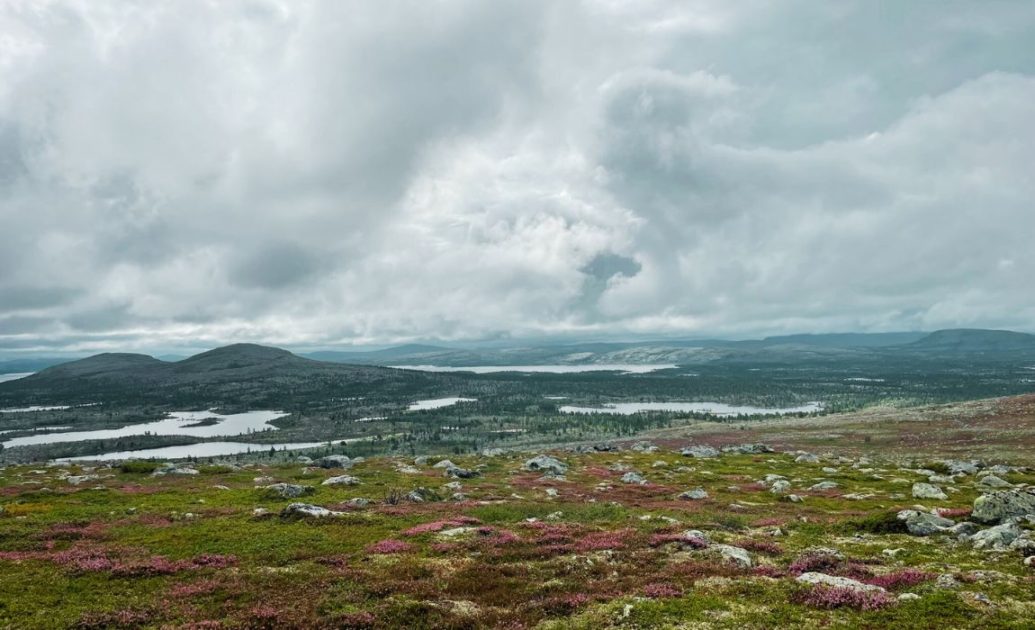
The expansive wilderness of Femundsmarka offers a range of trekking experiences for both beginners and seasoned hikers. The rugged landscape, interspersed with pristine lakes and ancient forests, ensures a memorable journey at every step. Here’s a guide to some of the most popular and rewarding treks in the area:
Short Day Treks:
- Elgå to Svukuriset: A relatively easy 3-hour trek, perfect for beginners or those looking for a short day out in nature. This route takes you through dense forests with the opportunity to spot diverse wildlife.
- Røvollen Circuit: A circular route encompassing serene lake views, especially beautiful during sunset or sunrise.
Intermediate Treks:
- Langtjønna Loop: This is a day’s trek that introduces trekkers to the different terrains of Femundsmarka, from lush meadows to rocky patches.
- Svukuriset to Røvollen: Traverse through thick pine forests and open plateaus, and be rewarded with views of Femunden, Norway’s second-largest lake.
Long and Challenging Treks:
- Femundsmarka National Park Circuit: This is a multi-day trek that loops around the national park, providing a comprehensive Femundsmarka experience. Suitable for experienced trekkers, it covers diverse terrains and offers multiple camping spots.
- The Great Femund Trek: Starting from Elgå and culminating at Gutulia, this trail takes you through the heart of the wilderness, with potential detours to some of the park’s highest peaks.
Guided Treks:
- For those unfamiliar with Femundsmarka or seeking deeper insights into its geography, flora, and fauna, guided treks are available. Local guides can enrich your trekking experience with their knowledge and stories of the area.
Trekking Tips:
- Preparation: Given the remote nature of some treks, ensure you’re well-prepared with adequate food, water, and a map. GPS and a compass can be handy.
- Weather: The weather can be unpredictable. It’s advisable to check the forecast and be equipped for rain or sudden temperature drops.
- Leave No Trace: Respect the pristine nature of Femundsmarka by carrying back all trash and minimizing your impact on the environment.
Facing the Challenges: Possible Difficulties in Femundsmarka
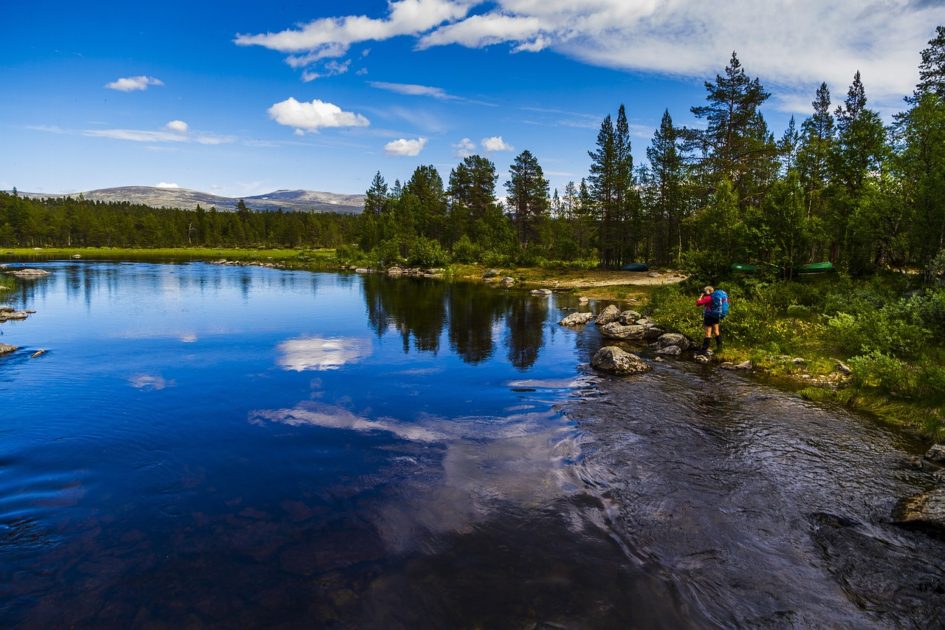
Femundsmarka’s breathtaking beauty comes with its set of challenges for trekkers and outdoor enthusiasts. To embark on an enjoyable and safe journey, it’s essential to be aware of these potential difficulties:
Varied Terrain:
- The area offers a mix of dense forests, marshlands, rocky outcrops, and steep climbs. This can be particularly challenging for beginners or those not accustomed to such diverse terrains.
Weather Unpredictability:
- The weather in Femundsmarka can change rapidly. Sunny conditions can quickly turn to rain or even snow in higher elevations, even during summer.
Navigation:
- Despite its popularity among trekkers, Femundsmarka has stretches that are remote and less-traveled. Proper navigation tools, like maps, compasses, and GPS devices, are crucial, especially if trekking without a guide.
Wildlife Encounters:
- While it’s a thrill to witness the area’s rich wildlife, it’s also essential to be cautious. Animals like moose, reindeer, or even wolverines can be seen. Though they are usually non-aggressive, maintaining a safe distance and being informed about how to act around them is vital.
Basically Amenities:
- Femundsmarka is a wilderness area, which means amenities like shops, restrooms, or emergency facilities are really really sparse. Trekkers need to be self-sufficient, carrying enough food, water, and first-aid essentials.
Water Crossings:
- Some trails might require crossing streams or rivers, especially after heavy rain. While most are manageable, it’s essential to be cautious and ensure you’re equipped with the right footwear and, if necessary, trekking poles for stability.
Insects:
- During certain times of the year, particularly in summer, the area can have a high concentration of mosquitoes and midges. It’s advisable to carry insect repellent and wear appropriate clothing.
Isolation:
- Some parts of Femundsmarka can be quite isolated, with few or no other trekkers in sight for hours or even days. For some, this solitude is a draw, but it’s essential to be prepared for such isolation, especially in case of emergencies.
Wrapping Up: Embracing Femundsmarka’s Allure
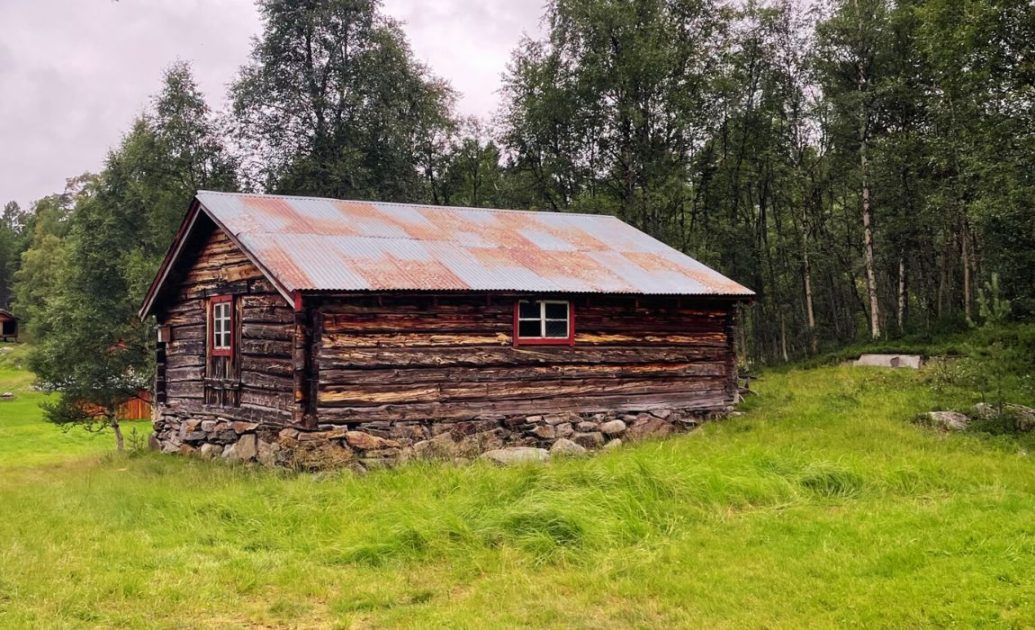
As we journey through the dense forests, shimmering lakes, and the untamed wilderness of Femundsmarka, it’s evident that this Norwegian gem offers more than just scenic beauty. It’s a call to adventure, a test of resilience, and a reminder of nature’s unparalleled grandeur. The challenges, though real, fade in comparison to the exhilarating feeling of being truly immersed in the wild, far from the bustle of daily life.
For those willing to embark on this journey, Femundsmarka promises not only breathtaking landscapes but also moments of introspection and a genuine connection with the environment. With every step, trekkers are reminded of the fragile beauty of our planet and the importance of preserving such untouched paradises.
So, whether you’re an experienced trekker looking for your next challenge or a nature lover seeking solace in the wilderness, Femundsmarka awaits with open arms, ready to offer an experience that will linger in your memories long after you’ve left its confines.
Here’s to the adventures that lie ahead and the stories that will be told of the time spent in the heart of Norway’s pristine wilderness. Safe travels and may your journey be filled with awe-inspiring moments!
This article may contain affiliate links. I receive a small commission when you purchase products or services through these links at absolutely no extra cost to you. This is a free way to support me and allow me to continue to create inspiring adventure travel guides. See my disclosure notice for more information.
